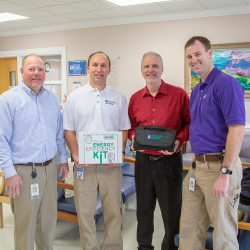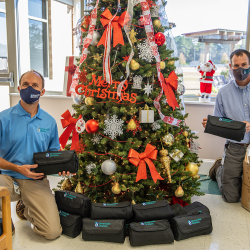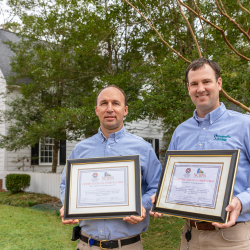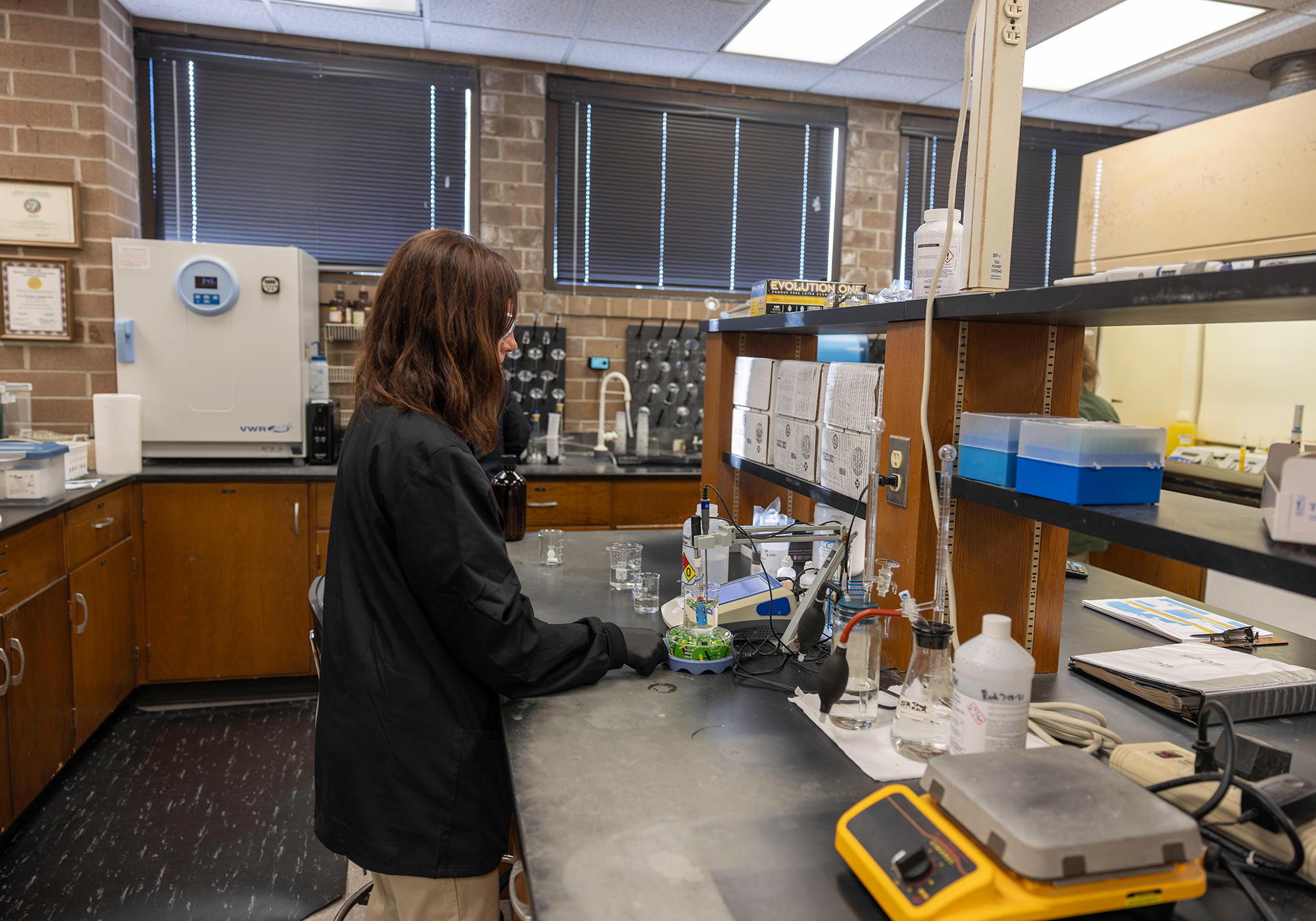
Seth Sorrell Shoneman, Energy Services Specialist in Customer Relations, passed away on August 11th. Seth was beloved by many at Greenville Utilities and in the community. He leaves behind a legacy of kindness, strength, and unwavering positivity.
Energy Services Specialist Jonathan Sergeant was a friend and colleague of Seth’s.
For eight years, Seth and Jonathan worked side by side, but Jonathan knew Seth since 2009 through the construction industry network.
Both had similar building science backgrounds, and when an Energy Specialist retired in 2017, Jonathan suggested that Seth put in for the position.
For Jonathan, Seth’s passing is the profound loss of a friend and colleague. It’s also the loss of a warm energy and radiating positivity that filled each room whenever Seth stepped into it.
Seth changed the way Jonathan saw the world and the way he moved within it.
“He was tasteful and had a peaceful mannerism,” Jonathan said.
“He knew how to read people. We both did in our own unique way. We meshed so well together to the point that we could finish each other’s sentences.”
Jonathan said even when Seth broke the news of his cancer diagnosis, he did it with calm strength.
“He said that he had some bad news,” Jonathan said. “But then he said everything would work out.”
Scott Mullis, Director of Customer Relations, said Seth was a quick adopter of new technology, volunteering to help in the Ecobee thermostat pilot program. He was the first to sign up for the Community Solar program and led efforts in employee wellness.
“It was clear as soon as we brought Seth on to join our team that he was a great fit,” Scott.
“He brought a tremendous amount of knowledge in the building sciences that he could apply to our work. His positivity was infectious, he was constantly thinking about ways to make our Energy Services section more effective.”
Jonathan said they made a good team.
They both found that the most challenging energy audits and customers brought the most professional reward, especially when they were able to offer solutions to the most difficult problems.
“We wanted the disgruntled folks. We were able to turn them around, and that is where we thrived.” Jonathan said, smiling and remembering that he knew they had flipped the situation when Seth gave him “that grin.”
“Seth was invested in solving problems,” Colleen Sicley, Assistant Director of Customer Relations said.
“He would get so excited about solving a problem, and he never made us feel bad for asking for help. We would send them the toughest calls, but he handled the most difficult customers well. It was his spirit. He was calm and he could laugh at things, and that would calm them down.”
Colleen said Seth had an incredible ability to have a hard conversation and was really good at facing a customer’s problem.
“He never backed down from having those conversations with customers, and I think that was because he really just wanted to help,” Colleen said.
“There was no negative energy. He was sincere. He enjoyed life and working here,” Jonathan said.
Seth continued to work throughout his cancer treatments and carried a ceaseless love of life.
Richie Shreves, Director of Human Resources, said in a tribute post, “I’m not sure Seth ever realized how truly inspirational he was to so many. Our lives are all richer because of him and he is deeply missed by his GUC family.”
“He was more than just an employee or staff member, Seth was our friend, and we miss him very much,” Scott said.
As Jonathan remembers Seth, he is filled with memories that are poignant and funny.
“It was a wild ride,” he said with a sigh, full of gratitude and grief.
Seth cherished his family. He leaves behind his wife, Bianca Gentile Shoneman; their children, Sophia Grace and Judah Charles; his parents, Mickey Jo Sorrell and John Shoneman (Jill); his brother, Dov Shoneman (Nikki); his sister, Charlotte Shoneman (Breandan); and a close circle of chosen family members. He joins in rest his son, Sebastian Sol Shoneman; his grandparents, Charles and Anne Shoneman and Minnie and Ralph Sorrell; and many loyal four-legged companions.





























